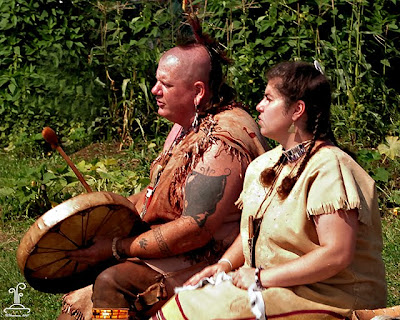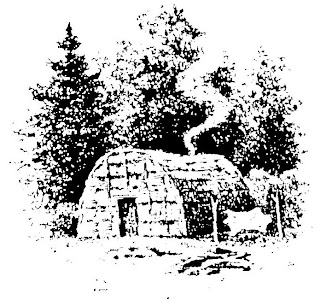 The “1911 Capitol Fire” exhibition will open at the New York State Museum on March 19 as part of a series of special events and programs commemorating the 100th anniversary of the devastating fire that struck the New York State Capitol.
The “1911 Capitol Fire” exhibition will open at the New York State Museum on March 19 as part of a series of special events and programs commemorating the 100th anniversary of the devastating fire that struck the New York State Capitol.
Many Albany residents awoke in the early morning hours on March 29, 1911 to see the Capitol on fire. The entire western side of the presumed fireproof building was engulfed in flames shooting 200 feet high. The fast-moving flames destroyed much of the State Library, the fifth largest in the U.S., which was housed in the Capitol.
More than 8,000 Museum objects stored in the Capitol were also destroyed or lost. The fire caused the unprecedented destruction of the state’s intellectual, cultural and historic property and also claimed the life of the lone night watchman.
Special events will include a commemoration ceremony at the Capitol on March 29 at 10 a.m., sponsored by the New York State Commission on the Restoration of the Capitol. The State Museum also will host a preview of a WMHT documentary – “The New York Capitol Fire” – in the Huxley Theater on Monday, March 28 at 12:15 p.m. It will air on WMHT on Thursday, March 31.
Open until June 18 in the lobby of the Office of Cultural Education (OCE), the exhibition is a collaboration between the State Museum, State Library and State Archives and chronicles how the fire affected each of the OCE institutions and their collections. It is based largely on the book, “The New York State Capitol and the Great Fire of 1911,” written by Paul Mercer and Vicki Weiss, senior librarians in the State Library’s Manuscripts and Special Collections unit.
The exhibition will include dramatic photographs, eyewitness accounts and artifacts that survived the blaze. One of those is a section of the iron chain link that stretched across the Hudson River between West Point and Constitution Island to prevent British vessels from navigating up the river during the American Revolution. West Point was a strategic site because of the s-curve in the Hudson there that forced large ships to slow down and become an easy target. The links were recovered from the State Library ruins after the fire. Another section of the chain is preserved at the West Point Military Academy.
Also on display are an 1892 fire helmet, lantern and fire nozzle, courtesy of Warren W. Abriel, a deputy chief in the Albany fire department and a fourth-generation Albany firefighter. The helmet was worn by Abriel’s great-grandfather, Reuben H. Abriel, who manned Steamer 2 for the Albany Fire Department when it was a volunteer force.
There also will be several objects showing fire damage that were part of the Museum’s world-famous Lewis Henry Morgan collection. New York state commissioned Morgan to gather objects from the Haudenosaunee (Iroquois) communities in the state and from the Six Nations reserve in Canada in 1849-50. All but 50 of some 500 objects were on exhibit.
On the day of the fire Arthur C. Parker, who was Seneca and the state’s first archaeologist, risked his life to save Museum collections and wrote that he was only able to save about 1,500 of the 10,000 objects. The only items in the Morgan collection that survived were in his office. The Parker family assisted Morgan in assembling the collection.
More information on the Morgan collection will be available at one of the programs planned at the Museum to complement the exhibition. The talks are all on Tuesdays at 12:15 p.m. They are:
* March 29 – Talk and Book Signing: “The New York State Capitol and the Great Fire of 1911.” Mercer and Weiss will present dramatic stories and images from their new book. The book will be for sale after the talk and also is available in the Museum shop and from the Friends of the New York State Library – http://nyslfriends.org/, which will receive all royalties from the book.
* April 5 – “The Conservation of Burned Documents.” Paper conservator Susan Bove of the State Archives will discuss contemporary preservation methods that were used to repair documents salvaged from the Capitol Fire. She will also talk about the conservation treatment protocol that she developed to meet the needs of these especially fragile items.
* Tuesday, April 12 – “Lessons Learned: Modern Response to Fire Events in Cultural Institutions.”
Paper conservator Michele Phillips of the State Office of Parks, Recreation and Historic Preservation’s Bureau of Historic Sites will provide an overview of best practices in action to safeguard collections and their impact on salvage and recovery.
Tuesday, April 19 – “A Capitol Loss: The Lewis Henry Morgan Collection.” Dr. Betty J. Duggan, the Museum’s curator of Ethnography and Ethnology, recounts the collection’s history and the experience of its young curator, Arthur C. Parker, during and after the fire.
The State Museum is a program of the New York State Education Department’s Office of Cultural Education. Located on Madison Avenue in Albany, the Museum is open Monday through Saturday from 9:30 p.m. to 5 p.m. except on Thanksgiving, Christmas and New Year’s Day. Further information can be obtained by calling (518) 474-5877 or visiting the museum website at www.nysm.nysed.gov.
Photo: Amateur photographer Harry Roy Sweney captured the Capitol inferno at 3:30 a.m. on March 29, 1911. The New York American paid $25.00 for the first print of this dramatic photograph. Courtesy New York State Library, Manuscripts and Special Collections.
Visitors to Fort Ticonderoga this summer will be able to explore the role of an Indian agent in 1759 as part of a new program entitled “Within Humane Bounds.” The program will be offered from 2 pm – 5 pm, Sunday through Thursday through October 20, 2011.







